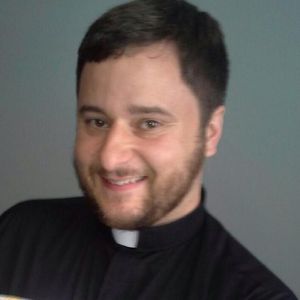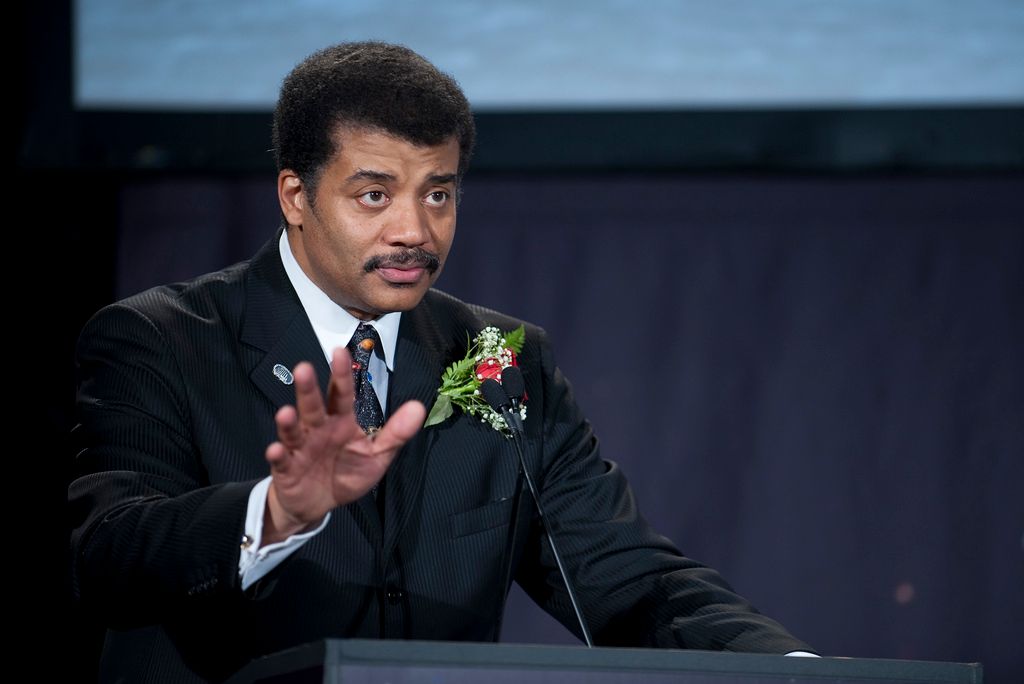Neil deGrasse Tyson, host of the popular Cosmos show, spent Christmas morning on Twitter, mocking Christians:
On this day long ago, a child was born who, by age 30, would transform the world. Happy Birthday Isaac Newton b. Dec 25, 1642
— Neil deGrasse Tyson (@neiltyson) December 25, 2014
Merry Christmas to all. A Pagan holiday (BC) becomes a Religious holiday (AD). Which then becomes a Shopping holiday (USA).
— Neil deGrasse Tyson (@neiltyson) December 25, 2014
Tyson’s obviously trolling, poking at Christians on one of our holiest days, hoping to spark a reaction. But these Tweets really aren’t worth getting upset over. In fact, I actually enjoyed them, for the following three reasons:
1) Isaac Newton shows religion and science aren’t opposed
Newton was a deeply religious scientist, and wrote extensively on it – even more than he wrote on scientific questions. The University of Sussex’s Enlightening Science explains:
Isaac Newton (1642-1727) was a deeply religious person who wrote far more words on religion than he did on science. […] By far the most systematic theological research undertaken by Newton concerned the field of prophecy, in which he wrote over 2 million words (which still survive). He wrote in one place that he had been chosen by God to offer an explanation of these texts to his contemporaries, though any plans in this direction were presumably thwarted by their radical nature.
Indeed, we still have a copy of a sermon Newton preached against idolatry.
To be sure, Newton wasn’t inerrant on either science or religion, and his Trinitarian views are confused, at best. But he’s a great reminder that one need not choose between being a great scientist and a devout follower of Jesus Christ.
2) Newton’s birthday reminds us of the Church’s role in promoting science
Tyson’s a bit premature in wishing Newton a happy birthday. His 372nd birthday isn’t actually until January 4th, at least if we’re measuring years as the time it takes the Earth to rotate around the sun. But Newton was born on Christmas … sort of.
Newton was born in Lincolnshire, England, at a time when the British were still using the old Julian calendar. But much of the rest of Europe was already using the more accurate Gregorian calendar, which is why (despite England’s obstinate protests to the contrary), Newton was really born 372 years before this January 4th.
All of this points to a much bigger point: why did part of Europe switch to the Gregorian calendar, and why did part of Europe resist?
The answer: the pope.
You might not have known this (particularly if your knowledge of science and religion is limited to how they’re so incompatible), but the Gregorian calendar is named for Pope Gregory XIII.
By the 16th century, it was clear that the Julian calendar wasn’t sufficiently precise. As a result of this, Easter Sunday was slipping further and further into the year. So Pope Gregory ordered the creation of a more precise calendar. It was the Jesuit priest and mathematician, Fr. Christopher Clavius, who finally worked out the kinks in the calendar (building upon the work of Aloysius Lilius). The resulting calendar, the one we use today, was enacted by papal decree on (Julian date) February 24, 1582. The following October, the calendars were fixed by jumping from Thursday the 4th to Friday the 15th, and we’ve been following these calendars since then.
Orthodox and Protestant countries (including Britain) refused to accept any calendar that the pope decreed, at least at first. The result is that the British Empire, including their U.S. colonies, clung to the obviously-inferior Julian calendar for nearly 200 years, finally making the switch in 1752. At least two Orthodox countries fought the change into the twentieth century: Greece (until 1923) and the Soviet Union (until 1929).
The Gregorian switch was (more or less) the beginning of the Vatican’s serious involvement in astronomy, but it was by no means the end. Even today, one of the most powerful ground-based telescopes in existence is the Vatican Advanced Technology Telescope, located at the Vatican Observatory in Arizona (the Observatory used to be in Rome, but Arizona is much clearer). So Tyson, an astrophysicist and cosmologist, is likely more indebted to the papacy than he would like to admit.
3) Tyson gets basic historical facts wrong
I already mentioned Tyson’s goof on Newton’s birthday; more serious is his second tweet, which claims that Christmas was a pagan holiday in the period before Christ. I’ve gone into much greater depth on that question before, but the short answer is that Tyson’s got his dating wrong again. Mithraic religion arose from the first to fourth century A.D.
In other words, Christ didn’t copy Mithras. Mithras copied Christ.
* * *
For a guy trolling Christians on Christmas to show how much smarter atheists are than Christians, it’s impressive to me that he managed to (1) praise a brilliant scientist and devout Christian, Isaac Newton; (2) unwittingly call our attention to the papal roots of the Gregorian calendar; and (3) make two glaring historical errors in the span of two tweets. Somehow, I’m doubting that this is the outcome Tyson had envisioned.
If nothing else, this is just another reminder that science and religion are compatible (and indeed, science owes a great deal to religious believers and leaders), and that the people claiming that they’re incompatible don’t seem to know what they’re talking about.
Originally posted on Shameless Popery


